How to use Inclusion Meeting Cards
How to use Inclusion Meeting Cards
How to use Inclusion Meeting Cards
How to use Inclusion Meeting Cards
With Inclusion Meeting Cards, we wanted to turn meetings into a game. We thought of red cards in soccer. No, no one’s literally head-butting anyone in our meetings, but proverbially … kinda?
Flashing a card was a simple, tangible, non-confrontational way to reorient the discussion and bring some humor to a potentially tense interaction (like telling someone they are interrupting too much).
At the start of a meeting, distribute the cards across the team based on communication styles. Everyone watches out for poor communication habits (like going off on tangents that distract the group's focus). Other people can be assigned specific roles, for the duration of the meeting.
After roles are distributed and the cards are passed around, you get started with your meeting. Cards are flashed, roles are reversed and better ideas are discovered, with a lot less tension and frustration (and a little more humor).
To start here are three ways you can "play the game" and level up your meetings.
Opinion cards
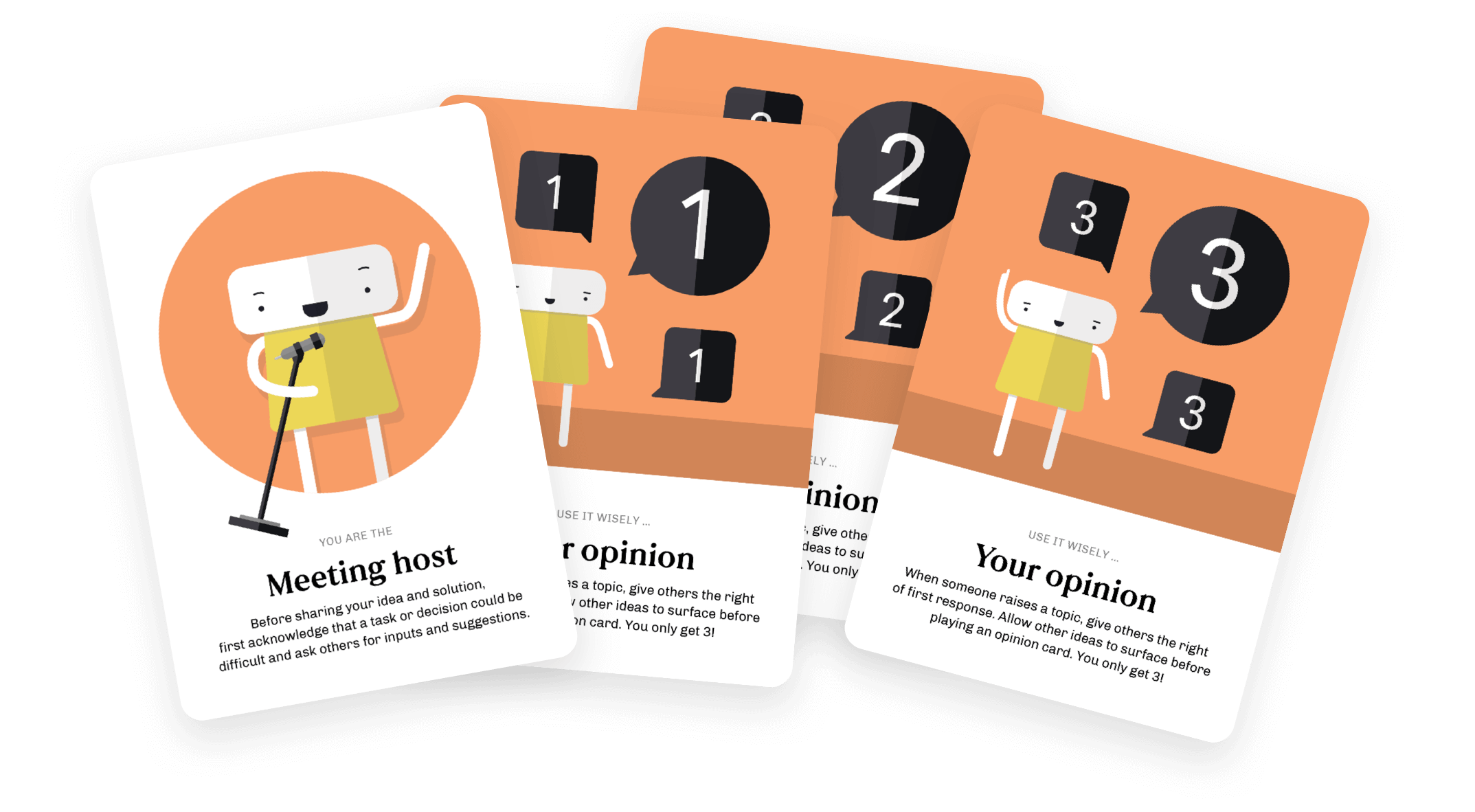
In its simplest form, the game has just one role and four cards. The Meeting Host, who sets the agenda, and the Host’s three Your Opinion cards.
The Host’s goal is to ask great questions and get others’ input. They can only share three opinions using their position of power, one for each card.
Instead of leaping to play an Opinion card, the host should ask questions like “How would you handle this?” or “What ideas do you have?” so everyone can be heard. When a difficult question is raised, the Host can write down their idea and wait to see if someone else shares a similar one to build on.
If there’s truly no one with the same idea, then the Host can decide to play an Opinion card. Just remember there are only three!
When playing an Opinion card, try to set a vision without being overly tactical. That will give the team a chance to figure out the best ways to get
to there.
Role cards
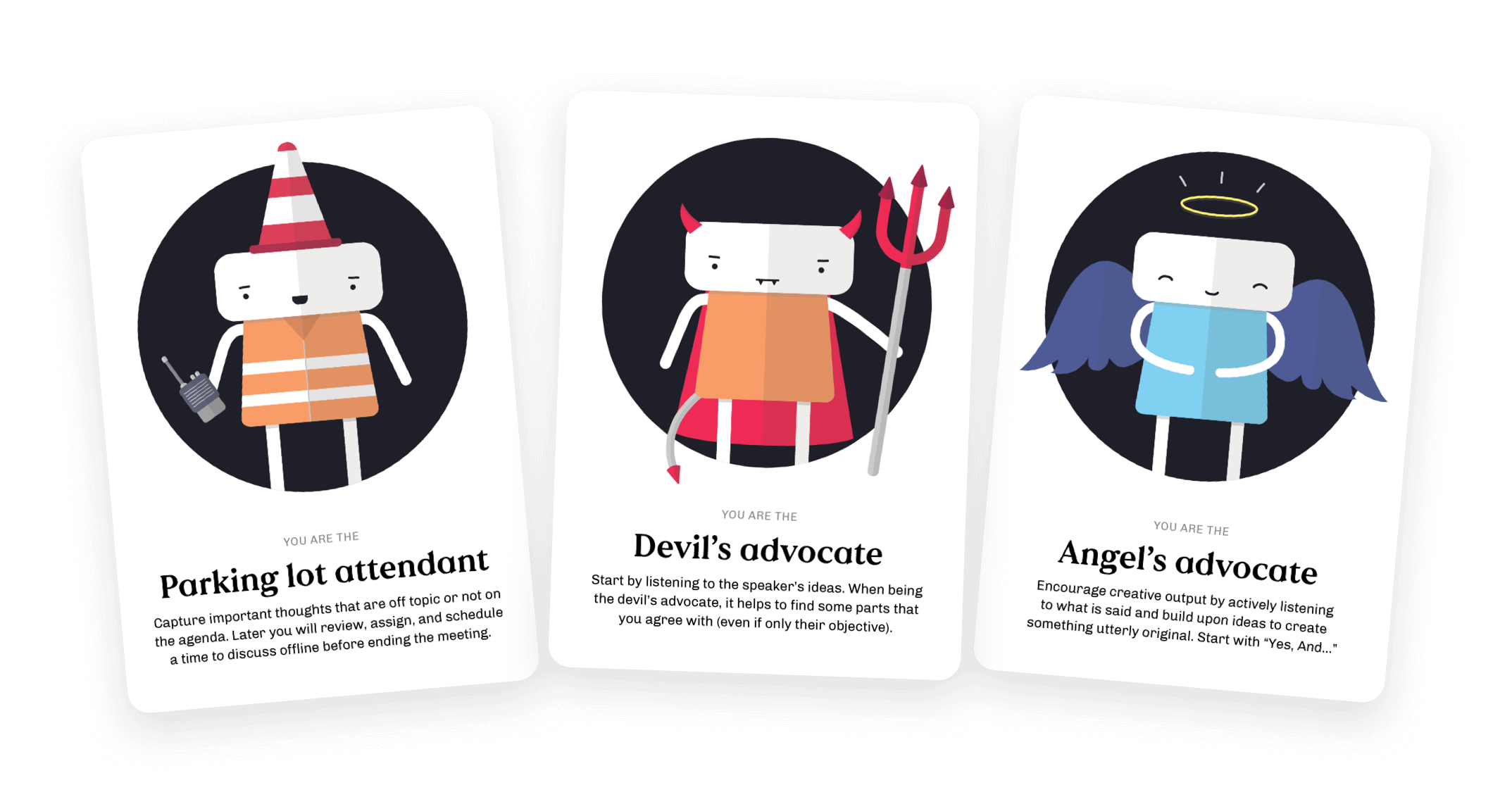
As the discussions get bigger and/or more complex, role cards join The Meeting Host.
The Parking Lot Attendant helps the team stay on topic, keeping the meeting’s purpose and agenda clearly visible. Any good ideas that don’t relate to the goals go into a visible “Parking Lot” on a whiteboard or post-its. At the end of the meeting, the Attendant asks the group to assign the parking lot items that need following up.
The Devil’s Advocate card actively encourages the conflict-averse to disagree, even with people who may have more power. To be a good Devil’s Advocate (without being truly evil), hear out every idea first. Establish a connection, show respect and find common ground. Then challenge assumptions and push the thinking further.
The Angel’s Advocate gives the team skeptic a new role. Instead of pointing out all the reasons an idea won’t work, this card asks them to “Yes, and … ” others’ contributions and build on them. It creates team confidence and conversational momentum.
Referee cards
This ultimate version adds two new roles — the Solo Referee and the Team Referee. Both get four cards to flash with instant feedback as needed.
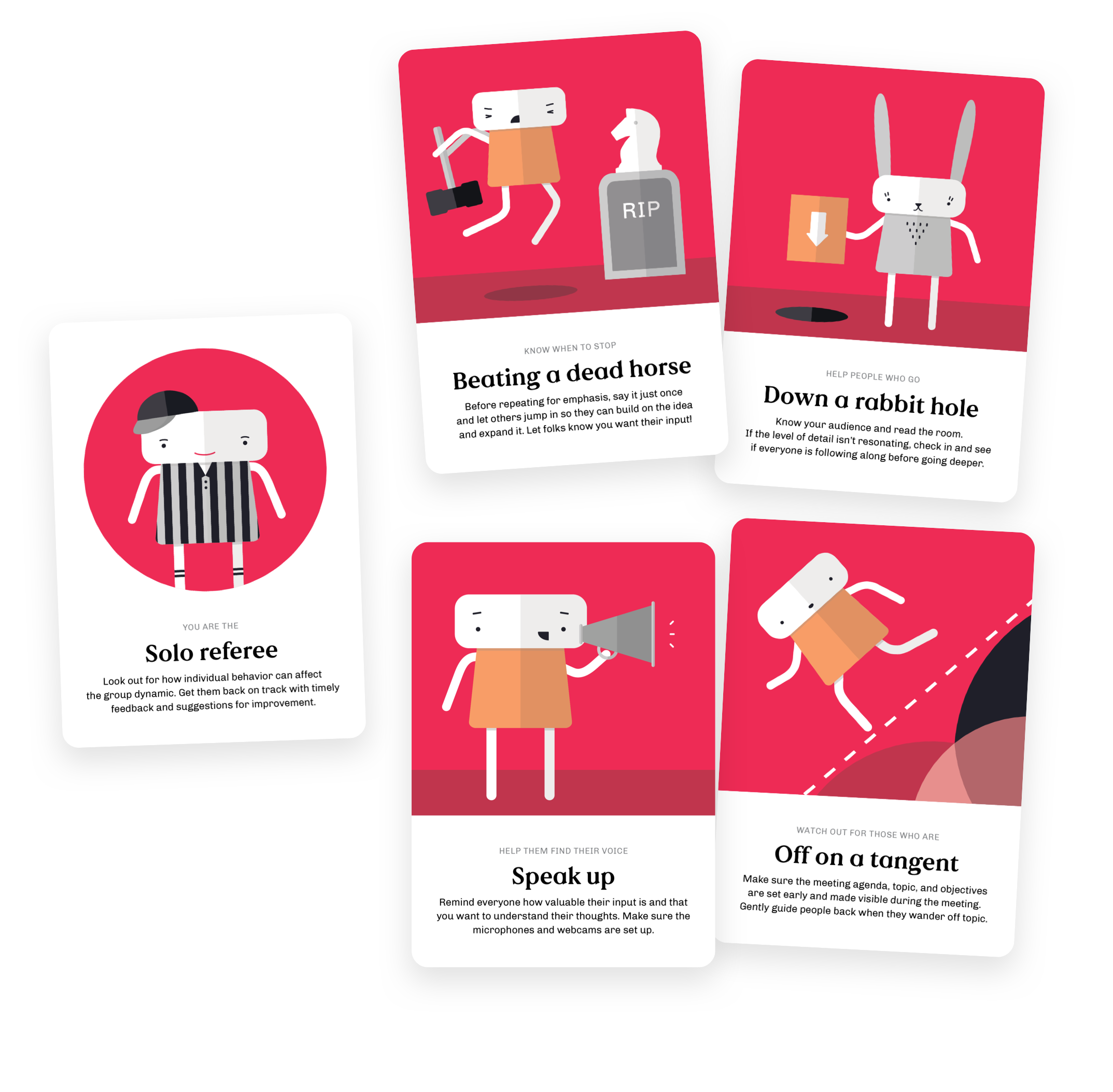
The Solo Ref catches individual behavior that may derail the group. When someone’s repeating an idea, the Solo Ref can throw the Beating a Dead Horse card. It encourages the speaker to take a breath, move on and let others build on the idea.
The Down A Rabbit Hole card keeps it high-level by asking the speaker to stick to what people need to know. When you see this card, remember to stop, ask questions and give others a chance to speak.
The Off on a Tangent card brings it back to the goals — even if the tangent-taker is in power. Ideas that deserve follow-up, can go in the parking lot.
The Speak Up card is for when someone’s struggling to be heard. Whether they are an introvert, a quiet-talker, or too far from the mic, this card reminds them that everyone wants to hear their ideas.
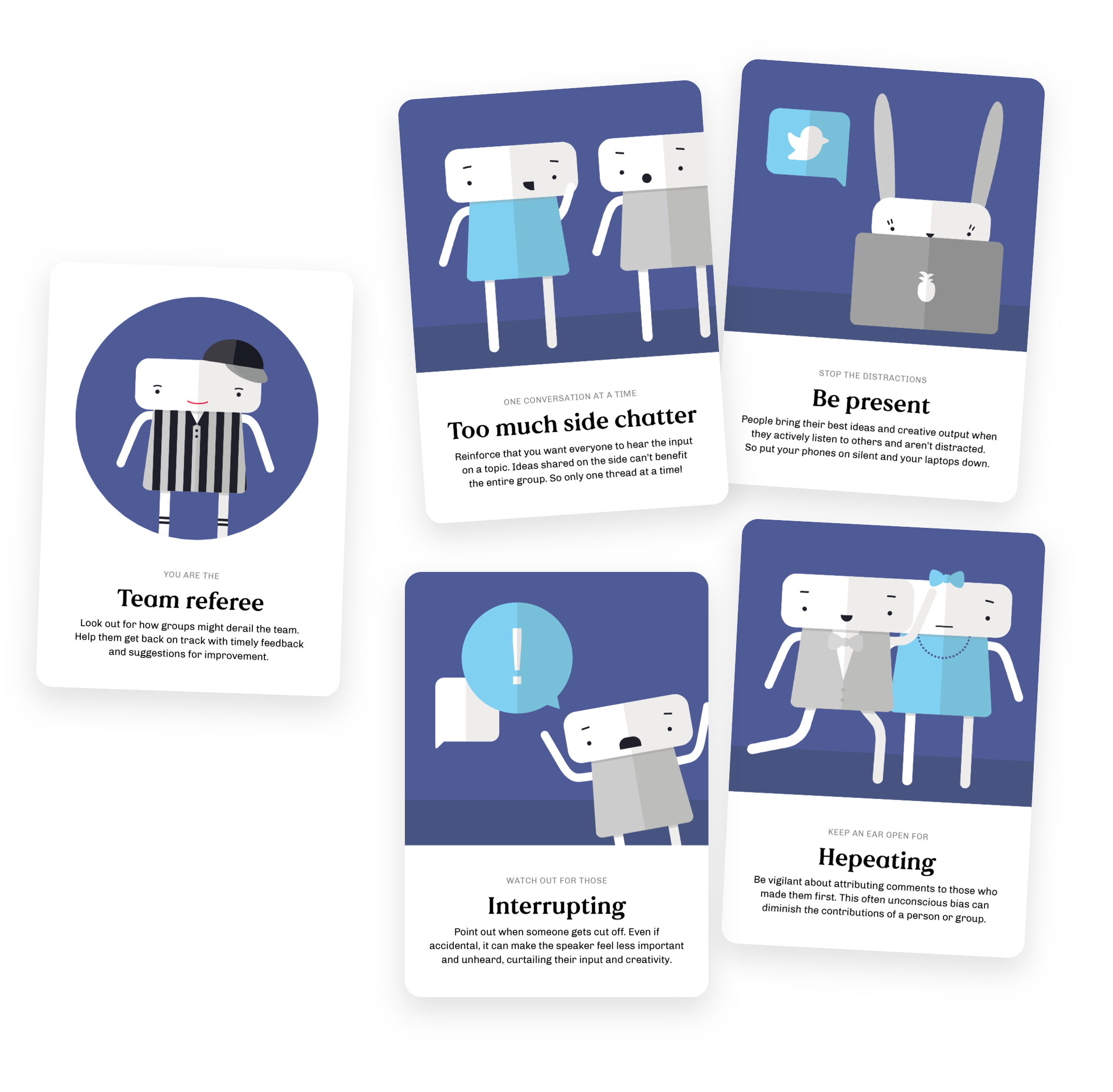
The Team Ref keeps pairs or groups from impacting team communication and collaboration.
The Too Much Side Chatter card comes out when side conversations make it hard to hear yourself think. It brings people back together for one shared conversation.
The Be Present card reminds people to put down their devices, listen actively and stay engaged. If something urgent happens, those involved can quietly step out and rejoin the group later.
Great ideas get people excited. The Interrupting card just makes sure that excitement doesn’t steamroll over anyone. Hold it up as a signal to give the original speaker room to finish their thought.
The Hepeating card goes up when an initially ignored idea is praised once someone with more power repeats it. Originally coined by physics professor Nicole Gugliucci and her friends (always credit the source!), it describes the way men’s ideas get more attention than women’s — though it applies to any privilege imbalance. This card gives everyone a chance to realize what’s happening, acknowledge the harm and work to correct it.
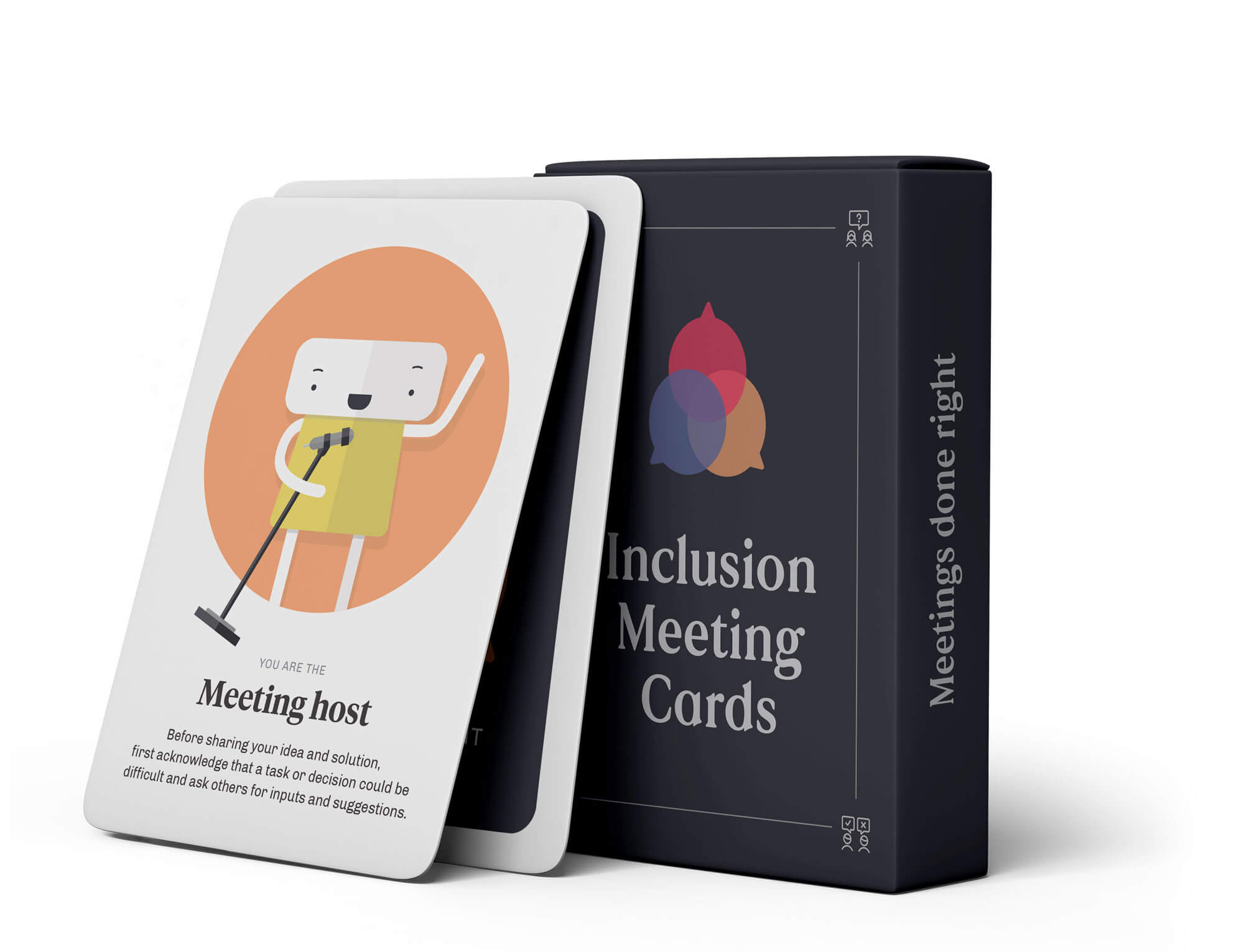
Meetings
Done
Right
© 2020 Inclusion Meeting Cards

